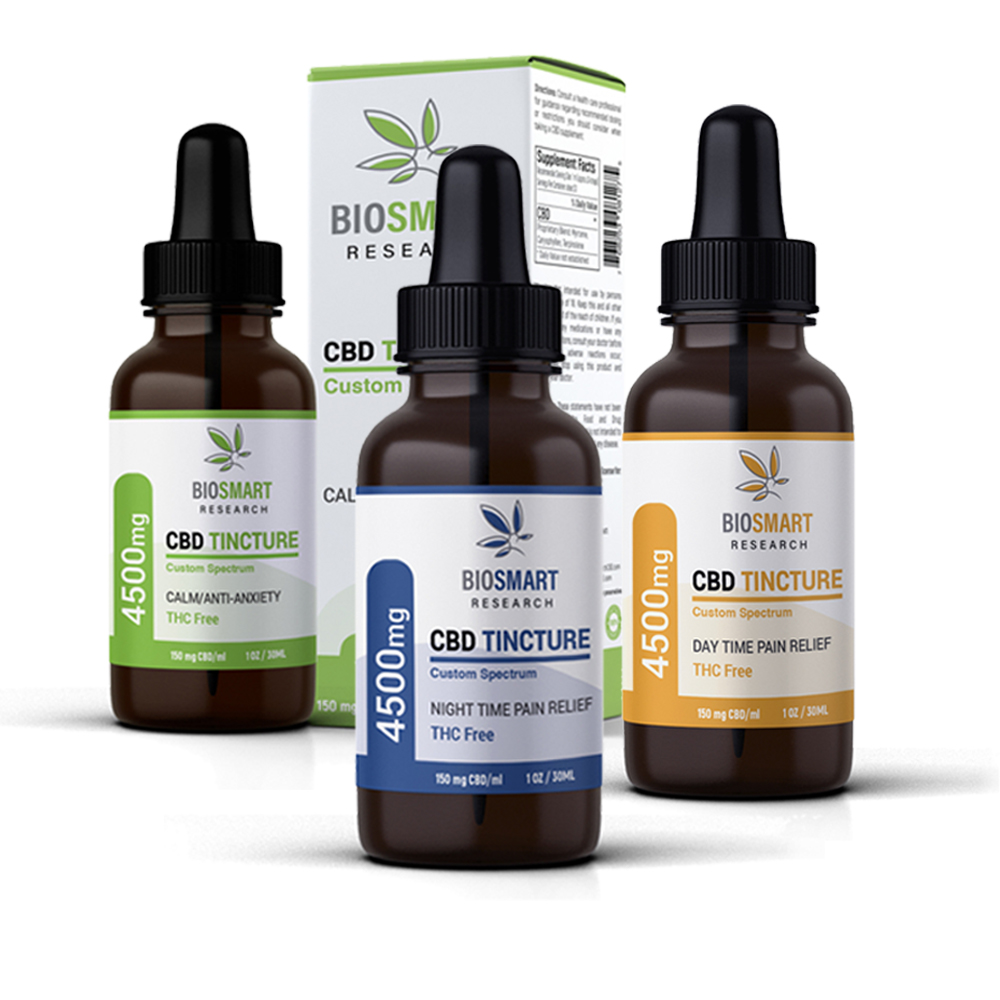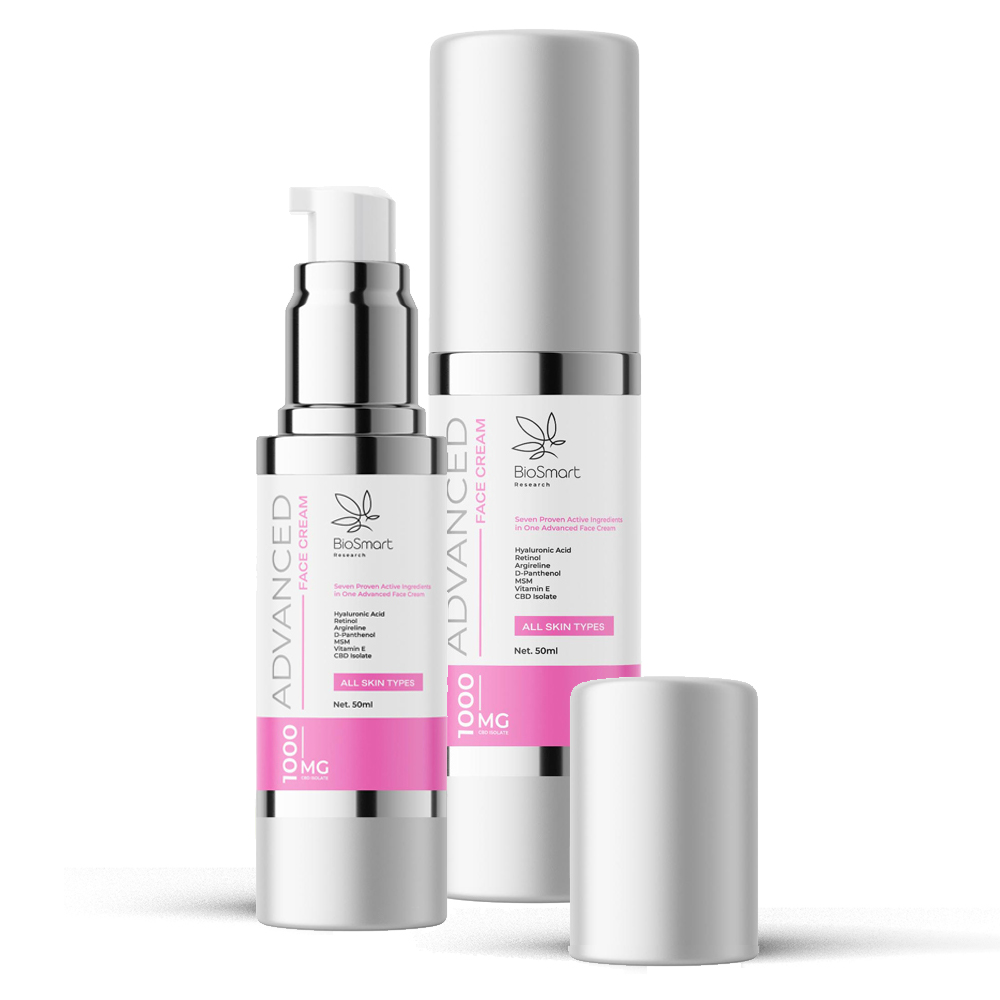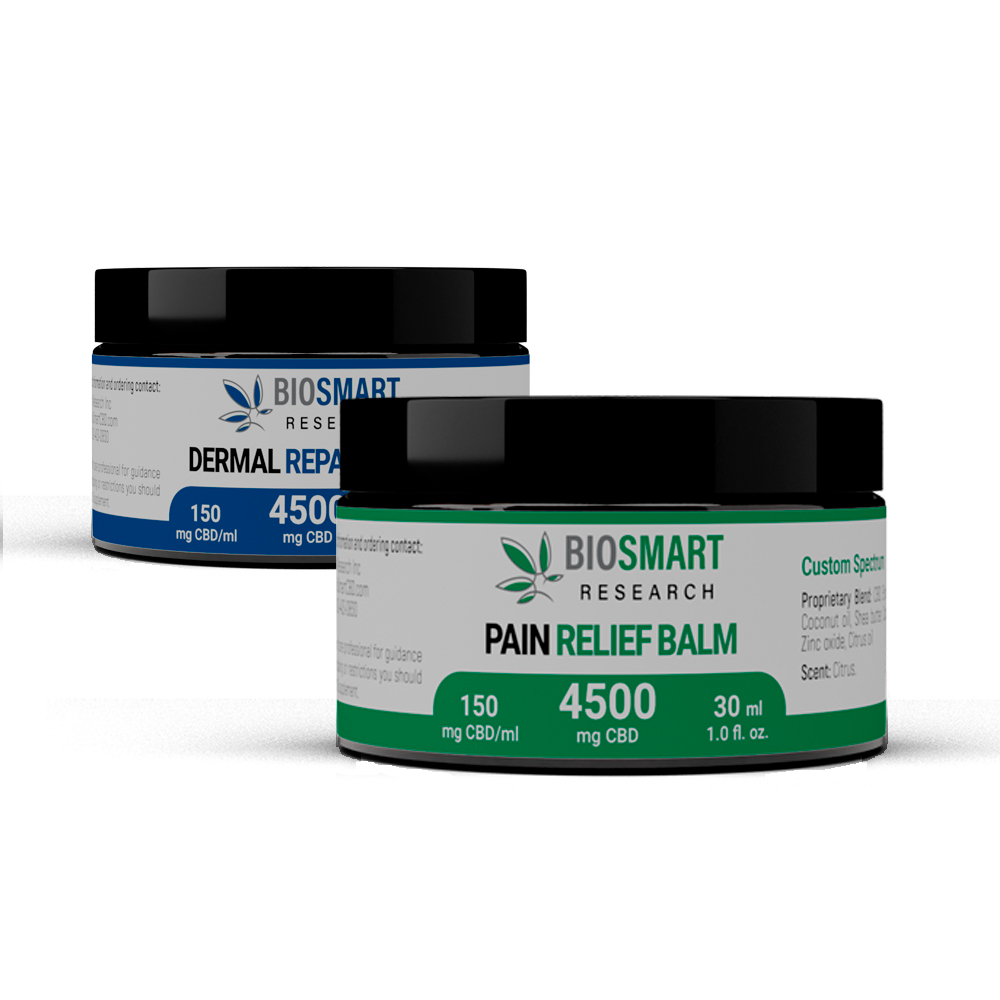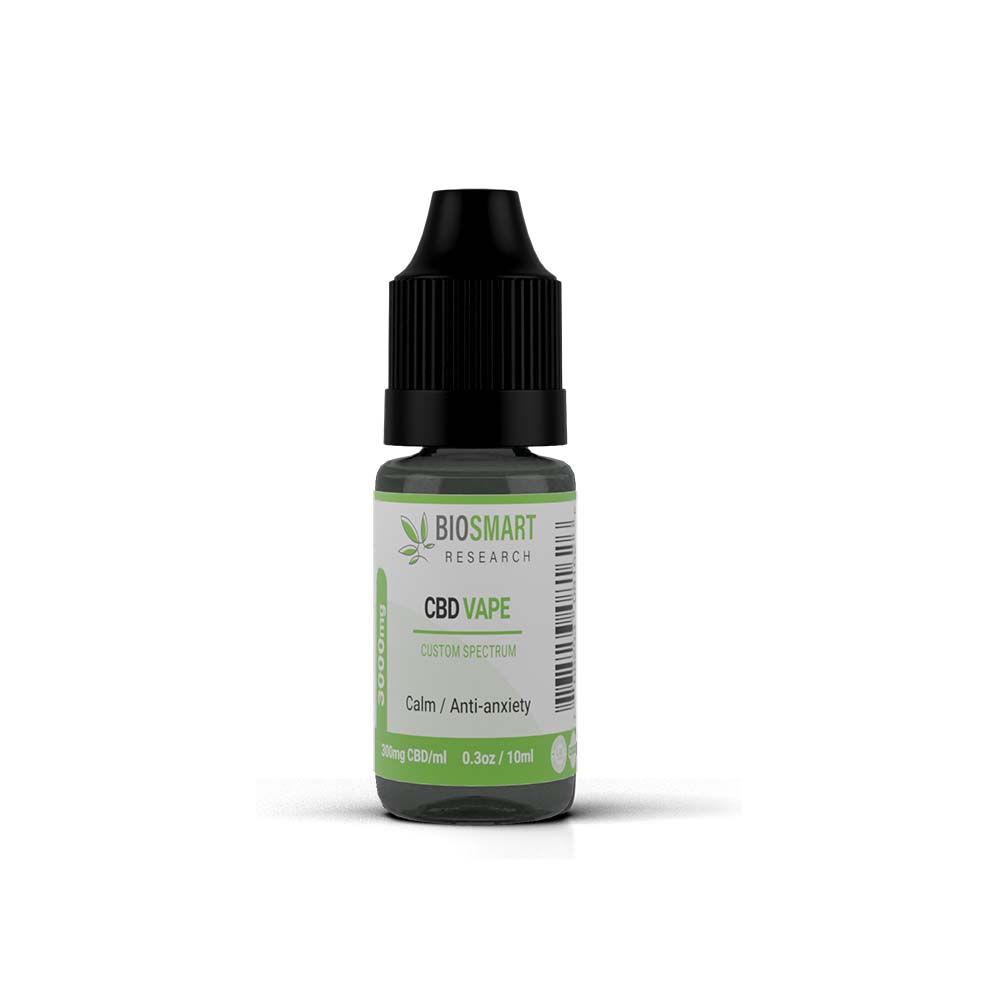FREQUENTLY ASKED QUESTIONS
CBD stands for ‘cannabidiol’ and is a major molecule in a class of compounds called cannabinoids found in hemp and marijuana plants. Unlike the other major cannabinoid THC, CBD is non-psychoactive. The effects of CBD may include: alertness at low doses, sedation at high doses, pain relief, relaxes muscle spasms, anti-inflammatory, nausea reducer, anti-anxiolytic, anti-depressant, anti-oxidant, anti-convulsant, neuro-protectant, and anti-tumor effects. **These effects are not always guaranteed and are still being studied by medical professionals.
Both hemp and marijuana plants naturally produce CBD. The compound is found throughout these plants but is most concentrated in the resinous trichomes of their flowers.
Anxiety, pain, chronic inflammation (and conditions related to it like IBS and arthritis), headaches, gut issues, and as an antioxidant ingredient in skincare are just a few of the many reasons why people are taking CBD. CBD is also famous for its ability to help patients with seizure disorders that aren’t helped by available medications. In fact, the FDA just approved a CBD-based pharmaceutical drug for this very use.
CBD and THC are part of a bigger group of chemically similar compounds called cannabinoids. THC and CBD are definitely the most famous ones, but researchers suspect that there are actually more than eighty different cannabinoids and as many as four hundred different chemical compounds inside the cannabis plant! Cannabinoids are found in a few different places; they’re present naturally in the body (in this case, they’re called endocannabinoids), found in plants (these are called phytocannabinoids), and they can even be created in a lab (aka synthetic cannabinoids). Interestingly, studying phytocannabinoids in plants actually led to the discovery of endocannabinoids and an entire system in the human body called the endocannabinoid system (more on this further down the page, promise!).
Cannabinoids interact with the body in a lot of different ways but one of the most important is by way of two cannabinoid receptors, CB1 and CB2. THC directly binds with CB1 receptors, which are found mainly in the brain and the nervous system and are responsible for the intoxication many of us have experienced from marijuana. CBD, however, doesn’t directly bind with CB1 or CB2 receptors. Instead, research has shown that CBD can influence the body’s inflammatory response and immune system in other ways and interact with serotonin receptors and GABA receptors in the brain—just to name a few.
The endocannabinoid system is sometimes referred to as a “master regulatory system” of the body and keeping it healthy appears to be really important to our overall health and well-being. Researchers have even coined the term “clinical endocannabinoid deficiency,” which has been associated with chronic headaches and other common health woes. Researchers think that the health of your endocannabinoid system is intricately related to your diet and lifestyle and that taking phytocannabinoids and doing things to support your body’s natural endocannabinoid production might help bring it back into balance.
The effects of CBD may include: alertness at low doses, sedation at high doses, pain relief, relaxes muscle spasms, anti-inflammatory, nausea reducer, anti-anxiolytic, anti-depressant, anti-oxidant, anti-convulsant, neuro-protectant, and anti-tumor effects. **These effects are not always guaranteed and are still being studied by medical professionals.
Some people will feel obvious, immediate changes when they take CBD, and others will only notice subtle ones or none at all. This is because the way your body responds to cannabinoids depends largely on the status of your unique endocannabinoid system. If you don’t feel anything when you take CBD, that doesn’t mean you’re not benefiting from it in some way. CBD’s anti-inflammatory and antioxidant properties are reason enough to make it part of your lifestyle. Experts also think that it can take up to a few months of taking CBD regularly for it to reach its full potential, which is important to know if you’re feeling discouraged at first. My advice is to stick it out for a while and keep a journal of your symptoms so you can take note of any subtle changes that might occur.
This depends entirely upon the method of administration. Smoking, aerosols, and vapors with CBD will have an onsite in minutes. Local effects of topical CBD are typically felt quickly as well.
The next fastest route will be from tincture administered sublingually (onset between 15 – 60 minutes).
The slowest administration method is oral ingestion, with effects that are felt in 90 minutes. This method also produces the longest lasting effects.
As of now, there are no “official” dosage recommendations for CBD and that’s partly because each person’s endocannabinoid system is unique and researchers haven’t figured exactly what the best way to dose CBD actually is. If you don’t feel anything the first few times you take CBD, you might be tempted to up the dose. But is it safe—and can you overdose? Based on the information we have so far, taking higher doses of CBD can lead to symptoms like headaches and fatigue—but so far nothing more serious than that. In other words: It’s extremely safe. That said, it’s always a good idea to talk to your doctor before taking more than the recommended dose, especially if you have a chronic health issue of any kind because CBD can interact with some medications at higher doses.
CBD is a non-psychoactive cannabinoid, meaning you will not feel a ‘high’ in the way marijuana-derived THC does. CBD is known to have calming and sedative effects, which compound at higher doses. For some people, CBD may be too sedating; others will find these effects to be effective at curbing insomnia.
CBD does not create a physical dependency. In fact, there is some evidence suggesting CBD can be a strong tool to help people break addictions to harmful substances.
According to the World Health Organizations 2017 Expert Committee on Drug Dependence, CBD has been found to have relatively low toxicity and is nonfatal even with high doses. The consequence of taking too much CBD is a chance of intense lethargy or drowsiness.
Hemp and CBD were both federally legalized with the passing of the 2018 Farm Bill. Various regulatory agencies such as the FDA and DEA are slowly reworking their policies pertaining to CBD, and some states are crafting their own rules. Be sure to research your own state’s stance on CBD before making any purchases.
This depends largely on the laws of your local municipality. Currently, there are no federal restrictions on who can purchase CBD (such as age limits). Be sure to review your local laws before making any purchases.
Drug tests look for THC, the psychoactive cannabinoid found in marijuana. Although the legal limit for THC in CBD oil is less than 0.3% some CBD oils may contain a small amount of THC. Although the risk is small, this may cause a person to fail a drug test. The risk increases with higher doses of CBD medicine. If drug testing is a concern for you, be sure to only buy CBD products made with CBD isolate as most full-spectrum CBD oils contain minuscule amounts of THC.
No. CBD is not an FDA-approved pharmaceutical or dietary supplement. You can purchase CBD without a prescription.
Yes. CBD is metabolized by enzymes responsible for metabolizing many other commonly-used drugs. CBD can also inhibit the activity of these enzymes. While CBD interactions with other drugs are more likely with higher doses of CBD, take caution when using CBD alongside other medications for serious conditions. As always, consult your doctor before administering CBD with other medications.
This depends entirely on your goals. The four primary ways are sublingual tinctures and sprays, topical lotions and balms, oral edibles and capsules, and inhalation via vapors, aerosols, and smoke. Capsules and tinctures are among the most accurate methods for precision dosing.
No. This is one of the biggest causes of confusion among CBD consumers. ‘Hemp oil’ refers to the oil pressed from ungerminated hemp seeds and is used as a food product in the same category as other culinary oils such as olive oil, walnut oil, peanut oil, etc. It contains no cannabinoids. ‘CBD oil’ refers to the cannabinoid-rich medicinal oil extracted from the hemp plant.
Unfortunately, many merchants are taking advantage of this confusion and are dishonestly marketing ‘hemp oil’ as the medicinal ‘CBD oil’. Be sure to read all labels before making a purchase. If the label does not clearly disclose CBD as an ingredient, it’s likely the product is a culinary ‘hemp oil’.
‘CBD tinctures’ and ‘CBD oils’ are interchangeable terms for a liquid concentrate containing CBD. The liquid is typically made with a base such as hemp seed oil, alcohol, or MCT oil. The best method of administering this form of CBD is sublingually (under the tongue).
‘CBD tinctures’ and ‘CBD oils’ are interchangeable terms for a liquid concentrate containing CBD. The liquid is typically made with a base such as hemp seed oil, alcohol, or MCT oil. The best method of administering this form of CBD is sublingually (under the tongue).
‘Hemp extract’ is the raw extract taken from a hemp plant via either CO2 or ethanol extraction methods. Other methods exist but deliver an inferior product. The extract can be stored for later processing into CBD oil or other CBD products.
‘CBD isolate’, ‘pure CBD’, or ‘CBD powder’ is the white, crystalline form of CBD molecule separated from the rest of the compounds it naturally occurs with. This isolated form can then be infused in all sorts of different products for consumption.
CBD edibles are food products infused with CBD. Common CBD edibles include chocolates, gummies, gum, drink mix powders, and more. CBD edibles are an effective oral rout of administrating CBD.
‘Terpenes’ are a class of compounds found in plants. Cannabis plants have over 200 terpenes, and they are what give cannabis its distinct aroma and flavor. For example, pinene is found in both cannabis and pine trees and is what gives pine trees their distinct aroma. Limonene is found in cannabis and citrus fruits and has a distinctly citrus-like aroma.
Terpenes have beneficial effects and work synergistically with compounds like CBD in a relationship called the ‘entourage effect’.
Whether the CBD oil has been derived from hemp or marijuana, the best CBD oil is a full-plant extract which has been lab-tested to ensure its potency and safety as a clean oil fit for consumption.
This depends entirely on the species. Consult your veterinarian before giving your pet CBD. That being said, pets can benefit from CBD for many of the same ailments humans use it for. Effective dosing will be much less due to differences in physiology. For example, dogs have a higher concentration of cannabinoid receptors in their brains. This means they are highly sensitive to THC and possible CBD. If you have decided to administer CBD to your pet, start with a low dose and gradually increase over a period of days until you discover the minimum effective dosage.
The ‘entourage effect’ refers to the synergistic relationship between all the compounds naturally occurring in the hemp plant. There is abundant pre-clinical evidence that has demonstrated a difference between when CBD is taken in its isolated form and when it is taken with these other natural compounds like cannabinoids, terpenes, and flavonoids.





